Financial System Adaptability and Resilience
This research group investigates critical aspects of financial system adaptability and resilience. First, it analyses the impact of natural disasters on financial systems. Second, the group aims to investigate the effects of political preferences for the green transition. Third, the group's research analyses the role of culture in economies.
Research Cluster
Financial Resilience and RegulationYour contact

Mitglied - Department Financial Markets
EXTERNAL FUNDING
07.2016 ‐ 12.2018
Relationship Lenders and Unorthodox Monetary Policy: Investment, Employment, and Resource Reallocation Effects
Leibniz Association
We combine a number of unique and proprietary data sources to measure the impact of relationship lenders and unconventional monetary policy during and after the European sovereign debt crisis on the real economy. Establishing systematic links between different research data centers (Forschungsdatenzentren, FDZ) and central banks with detailed micro-level information on both financial and real activity is the stand-alone proposition of our proposal. The main objective is to permit the identification of causal effects, or their absence, regarding which policies were conducive to mitigate financial shocks and stimulate real economic activities, such as employment, investment, or the closure of plants.
01.2015 ‐ 12.2019
Interactions between Bank-specific Risk and Macroeconomic Performance
German Research Foundation (DFG)
Refereed Publications

Crossing Networks Competition and Design
in: Competition and Regulation in Network Industries, No. 4, 2006
Abstract
In the past two decades, Alternative Trading Systems (ATSs) started to compete with traditional exchanges. Our paper focuses on one such system: a Crossing Network (CN). First, we discuss the distinct institutional aspects a CN offers compared to traditional markets. Next, we present an overview of the theoretical and empirical literature analyzing their success in competing with traditional markets. Finally, we offer some prospects on the potential outcome of this competition, taking into account market design issues such as the optimal degree of transparency of CNs. We also provide a market practioner’s view on the market design of CNs.
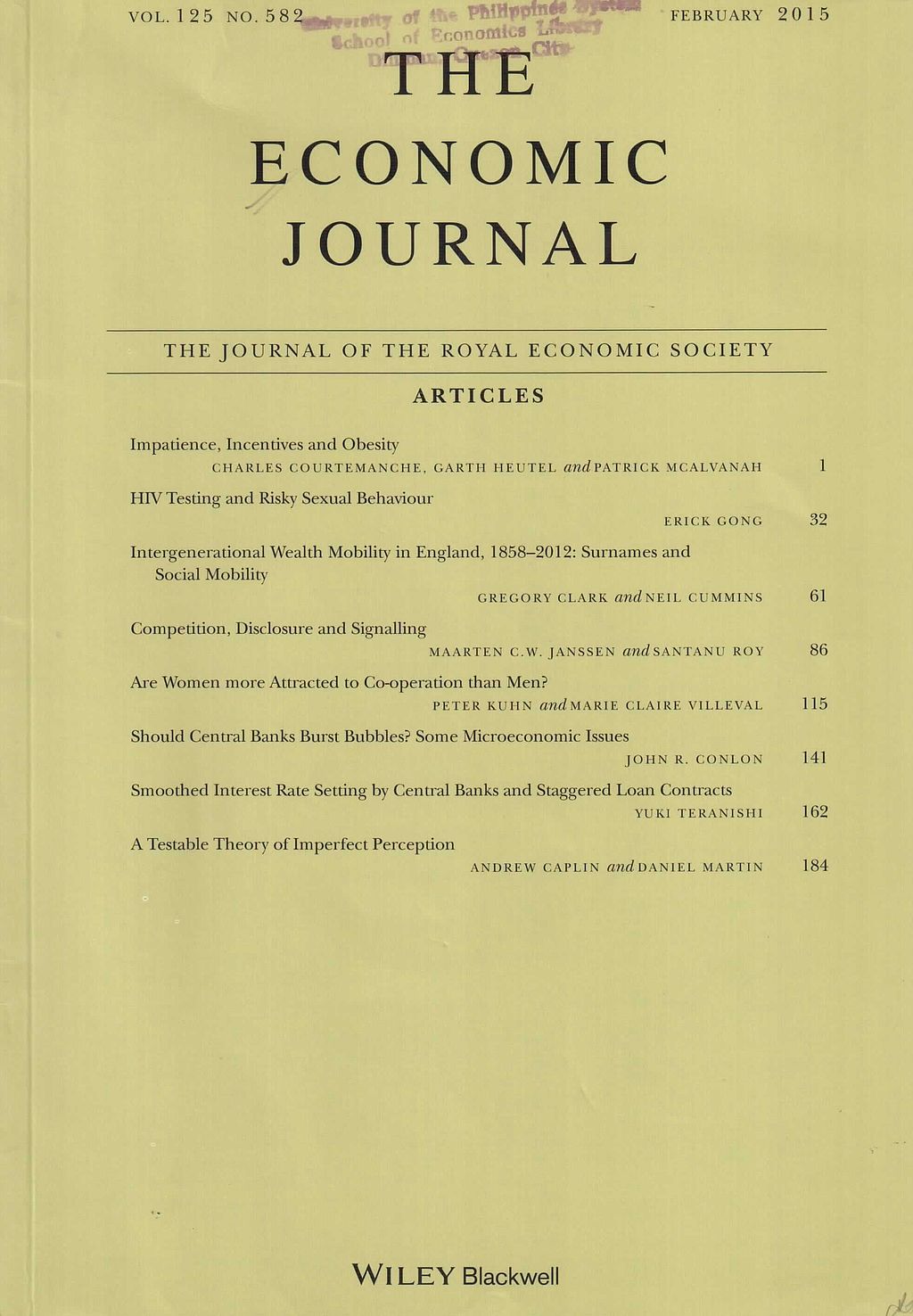
Entry and Strategic Information Display in Credit Markets
in: Economic Journal, No. 513, 2006
Abstract
In many countries, lenders voluntarily provide information about their borrowers to private credit registries. A recent World Bank survey reveals that the display of a lender's own borrower information is often not reciprocated. That is, access to these registries does not require the prior provision of proprietary data. We argue that incumbent lenders release information about a portion of their profitable borrowers for strategic reasons. The reasoning is that the pool of unreleased borrowers becomes characterised by a severe adverse selection problem. This prevents the entrants from bidding for all the incumbent's profitable borrowers and reduces their scale of entry.

Investment and Internal Finance: Asymmetric Information or Managerial Discretion?
in: International Journal of Industrial Organization, No. 1, 2006
Abstract
This paper examines the investment-cash flow sensitivity of publicly listed firms in The Netherlands. Investment-cash flow sensitivities can be attributed to overinvestment resulting from the abuse of managerial discretion, but also to underinvestment due to information problems. The Dutch corporate governance structure presents a number of distinctive features, in particular the limited influence of shareholders, the presence of large blockholders, and the importance of bank ties. We expect that in The Netherlands, the managerial discretion problem is more important than the asymmetric information problem. We use Tobin's Q to discriminate between firms with these problems, where LOW Q firms face the managerial discretion problem and HIGH Q firms the asymmetric information problem. As hypothesized, we find substantially larger investment-cash flow sensitivity for LOW Q firms. Moreover, specifically in the LOW Q sample, we find that firms with higher (bank) debt have lower investment-cash flow sensitivity. This finding shows that leverage, and particularly bank debt, is a key disciplinary mechanism which reduces the managerial discretion problem.

Aggressive Orders and the Resiliency of a Limit Order Market
in: Review of Finance, No. 2, 2005
Abstract
We analyze the resiliency of a pure limit order market by investigating the limit order book (bid and ask prices, spreads, depth and duration), order flow and transaction prices in a window of best limit updates and transactions around aggressive orders (orders that move prices). We find strong persistence in the submission of aggressive orders. Aggressive orders take place when spreads and depths are relatively low, and they induce bid and ask prices to be persistently different after the shock. Depth and spread remain also higher than just before the order, but do return to their initial level within 20 best limit updates after the shock. Relative to the sample average, depths stay around their mean before and after aggressive orders, whereas spreads return to their mean after about twenty best limit updates. The initial price impact of the aggressive order is partly reversed in the subsequent transactions. However, the aggressive order produces a long-term effect as prices show a tendency to return slowly to the price of the aggressive order.

Distance, Lending Relationships, and Competition
in: Journal of Finance, No. 1, 2005
Abstract
We study the effect on loan conditions of geographical distance between firms, the lending bank, and all other banks in the vicinity. For our study, we employ detailed contract information from more than 15,000 bank loans to small firms comprising the entire loan portfolio of a large Belgian bank. We report the first comprehensive evidence on the occurrence of spatial price discrimination in bank lending. Loan rates decrease with the distance between the firm and the lending bank and increase with the distance between the firm and competing banks. Transportation costs cause the spatial price discrimination we observe.
Working Papers
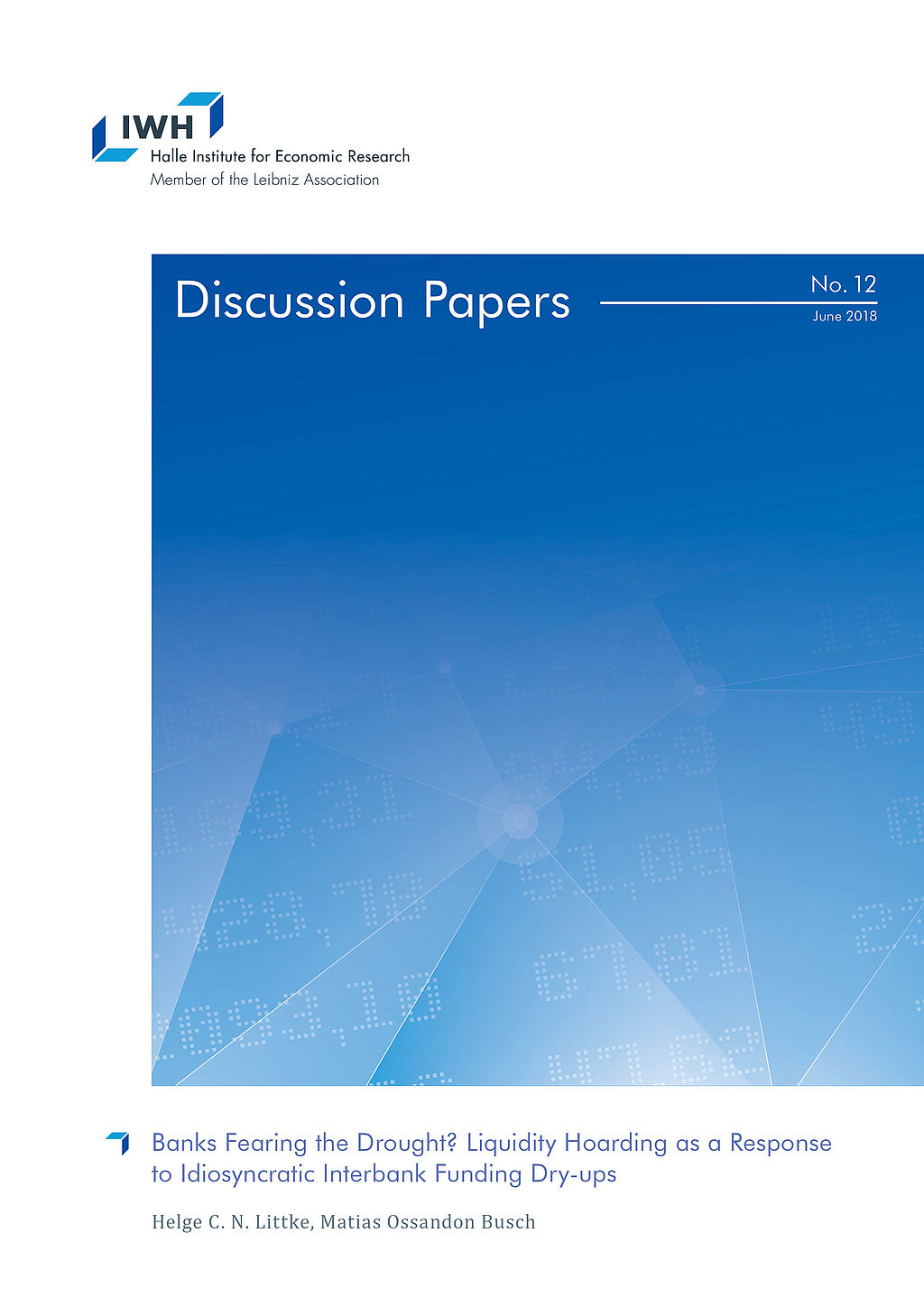
Banks Fearing the Drought? Liquidity Hoarding as a Response to Idiosyncratic Interbank Funding Dry-ups
in: IWH Discussion Papers, No. 12, 2018
Abstract
Since the global financial crisis, economic literature has highlighted banks’ inclination to bolster up their liquid asset positions once the aggregate interbank funding market experiences a dry-up. To this regard, we show that liquidity hoarding and its detrimental effects on credit can also be triggered by idiosyncratic, i.e. bankspecific, interbank funding shocks with implications for monetary policy. Combining a unique data set of the Brazilian banking sector with a novel identification strategy enables us to overcome previous limitations for studying this phenomenon as a bankspecific event. This strategy further helps us to analyse how disruptions in the bank headquarters’ interbank market can lead to liquidity and lending adjustments at the regional bank branch level. From the perspective of the policy maker, understanding this market-to-market spillover effect is important as local bank branch markets are characterised by market concentration and relationship lending.
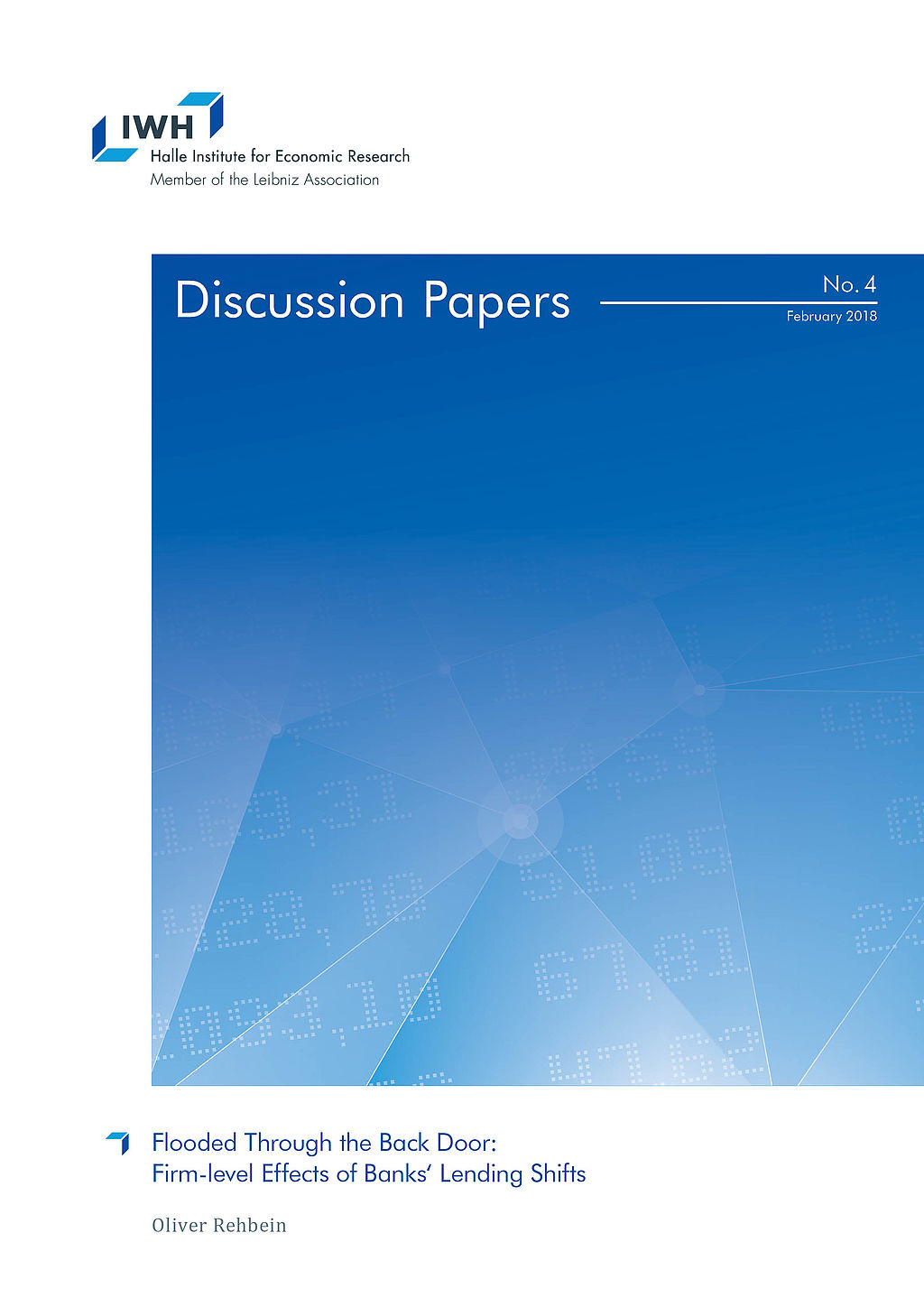
Flooded Through the Back Door: Firm-level Effects of Banks‘ Lending Shifts
in: IWH Discussion Papers, No. 4, 2018
Abstract
I show that natural disasters transmit to firms in non-disaster areas via their banks. This spillover of non-financial shocks through the banking system is stronger for banks with less regulatory capital. Firms connected to a disaster-exposed bank with below median capital reduce their employment by 11% and their fixed assets by 20% compared to firms in the same region without such a bank during the 2013 flooding in Germany. Relationship banking and higher firm capital also mitigate the effects of such negative cross-regional spillovers.
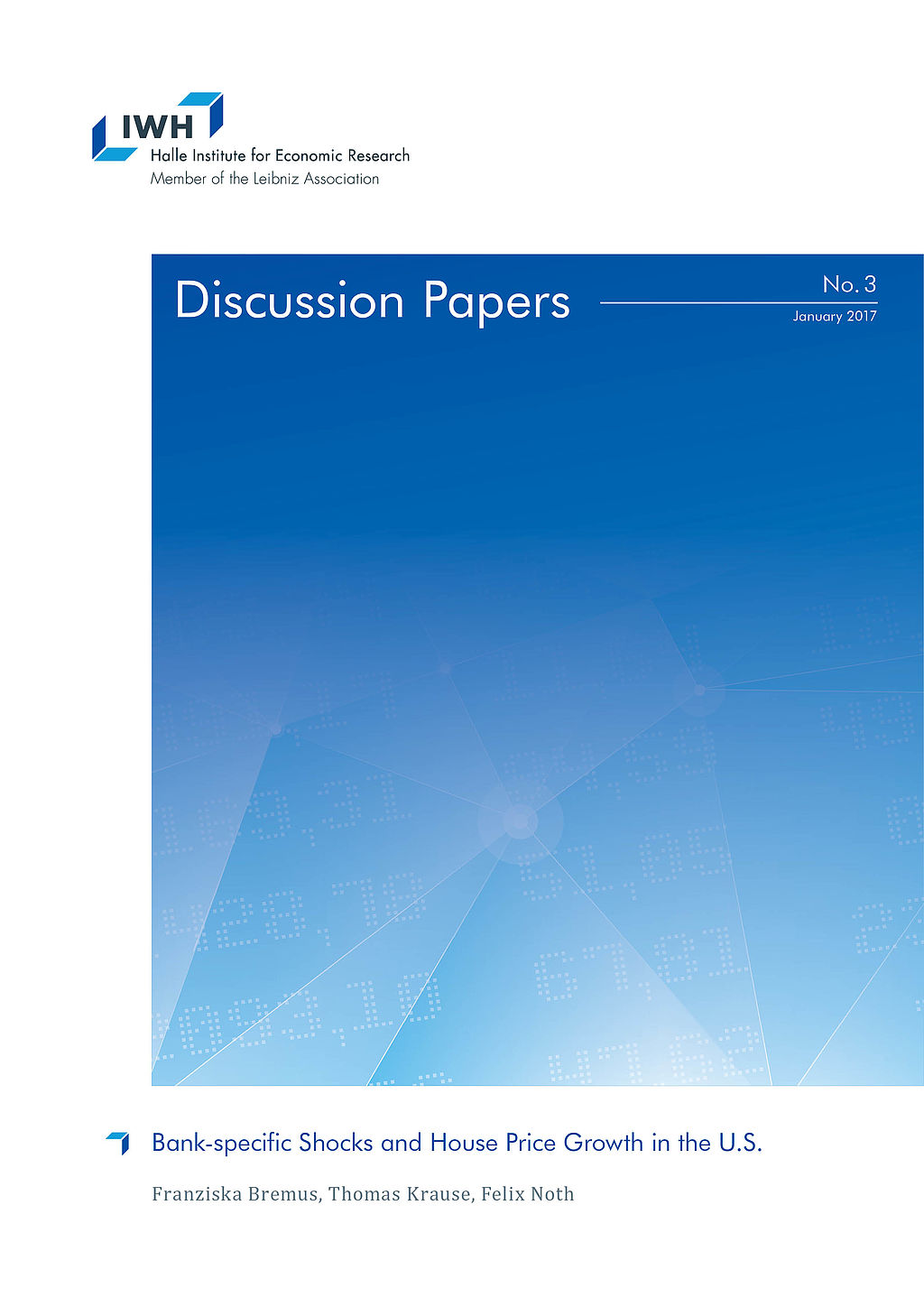
Bank-specific Shocks and House Price Growth in the U.S.
in: IWH Discussion Papers, No. 3, 2017
Abstract
This paper investigates the link between mortgage supply shocks at the banklevel and regional house price growth in the U.S. using micro-level data on mortgage markets from the Home Mortgage Disclosure Act for the 1990-2014 period. Our results suggest that bank-specific mortgage supply shocks indeed affect house price growth at the regional level. The larger the idiosyncratic shocks to newly issued mortgages, the stronger is house price growth. We show that the positive link between idiosyncratic mortgage shocks and regional house price growth is very robust and economically meaningful, however not very persistent since it fades out after two years.
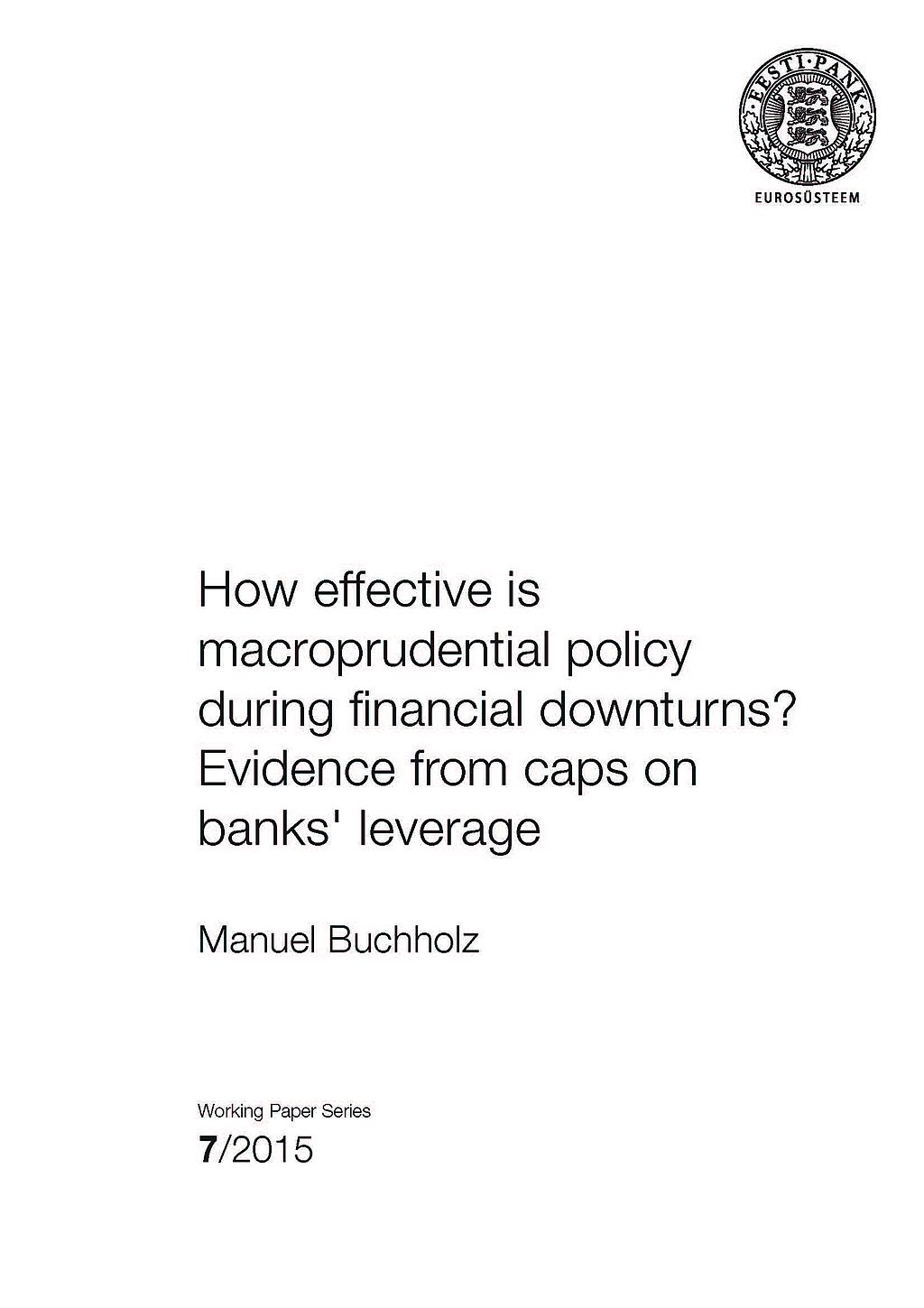
How Effective is Macroprudential Policy during Financial Downturns? Evidence from Caps on Banks' Leverage
in: Working Papers of Eesti Pank, No. 7, 2015
Abstract
This paper investigates the effect of a macroprudential policy instrument, caps on banks' leverage, on domestic credit to the private sector since the Global Financial Crisis. Applying a difference-in-differences approach to a panel of 69 advanced and emerging economies over 2002–2014, we show that real credit grew after the crisis at considerably higher rates in countries which had implemented the leverage cap prior to the crisis. This stabilising effect is more pronounced for countries in which banks had a higher pre-crisis capital ratio, which suggests that after the crisis, banks were able to draw on buffers built up prior to the crisis due to the regulation. The results are robust to different choices of subsamples as well as to competing explanations such as standard adjustment to the pre-crisis credit boom.

Monetary Policy under the Microscope: Intra-bank Transmission of Asset Purchase Programs of the ECB
in: IWH Discussion Papers, No. 9, 2015
Abstract
With a unique loan portfolio maintained by a top-20 universal bank in Germany, this study tests whether unconventional monetary policy by the European Central Bank (ECB) reduced corporate borrowing costs. We decompose corporate lending rates into refinancing costs, as determined by money markets, and markups that the bank is able to charge its customers in regional markets. This decomposition reveals how banks transmit monetary policy within their organizations. To identify policy effects on loan rate components, we exploit the co-existence of eurozone-wide security purchase programs and regional fiscal policies at the district level. ECB purchase programs reduced refinancing costs significantly, even in an economy not specifically targeted for sovereign debt stress relief, but not loan rates themselves. However, asset purchases mitigated those loan price hikes due to additional credit demand stimulated by regional tax policy and enabled the bank to realize larger economic margins.


















